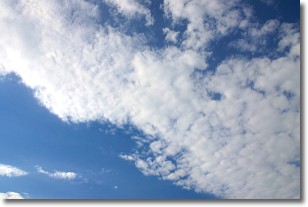Weather Alert in Washington
Fire Weather Watch issued August 11 at 1:53PM PDT until August 13 at 11:00PM PDT by NWS Spokane WA
AREAS AFFECTED: Foothills of Northeast Washington; Colville Reservation; Okanogan Valley; Methow Valley; Central Washington Cascade Foothills; Waterville Plateau; Western Columbia Basin; Eastern Columbia Basin / Palouse / Spokane Area; Lower Palouse / Snake River
DESCRIPTION: The National Weather Service in Spokane has issued a Fire Weather Watch for wind and low relative humidity, which is in effect from Wednesday morning through Wednesday evening. * Affected Area: Foothills of Northeast Washington (Zone 701), Colville Reservation (Zone 702), Okanogan Valley (Zone 703), Methow Valley (Zone 704), Foothills of Central Washington Cascades (Zone 705), Waterville Plateau (Zone 706), Western Columbia Basin (Zone 707), Eastern Columbia Basin -Palouse - Spokane Area (Zone 708) and Lower Palouse -Snake River (Zone 709). * Winds: West 15 to 25 mph with gusts up to 35 mph. * Relative Humidities: 13 to 25 percent. * Impacts: Rapid spread of any new or existing fires.
INSTRUCTION: A Fire Weather Watch means that critical fire weather conditions are forecast to occur. Listen for later forecasts and possible Red Flag Warnings.
Want more detail? Get the Complete 7 Day and Night Detailed Forecast!
Current U.S. National Radar--Current
The Current National Weather Radar is shown below with a UTC Time (subtract 5 hours from UTC to get Eastern Time).

National Weather Forecast--Current
The Current National Weather Forecast and National Weather Map are shown below.

National Weather Forecast for Tomorrow
Tomorrow National Weather Forecast and Tomorrow National Weather Map are show below.

North America Water Vapor (Moisture)
This map shows recent moisture content over North America. Bright and colored areas show high moisture (ie, clouds); brown indicates very little moisture present; black indicates no moisture.

Weather Topic: What are Stratus Clouds?
Home - Education - Cloud Types - Stratus Clouds
 Next Topic: Wall Clouds
Next Topic: Wall Clouds
Stratus clouds are similar to altostratus clouds, but form at a
lower altitude and are identified by their fog-like appearance, lacking the
distinguishing features of most clouds.
Stratus clouds are wider than most clouds, and their base has a smooth, uniform
look which is lighter in color than a nimbostratus cloud.
The presence of a stratus cloud indicates the possibility of minor precipitation,
such as drizzle, but heavier precipitation does not typically arrive in the form
of a stratus cloud.
Next Topic: Wall Clouds
Weather Topic: What are Altocumulus Clouds?
Home - Education - Cloud Types - Altocumulus Clouds
 Next Topic: Altostratus Clouds
Next Topic: Altostratus Clouds
Similar to cirrocumulus clouds, altocumulus clouds are
characterized by cloud patches. They are distinguished by larger cloudlets
than cirrocumulus clouds but are still smaller than stratocumulus clouds.
Altocumulus clouds most commonly form in middle altitudes (between 2 and 5 km)
and may resemble, at times, the shape of a flying saucer.
These uncommon formations, called altocumulus lenticularis, are created by uplift
in the atmosphere and are most often seen in close proximity to mountains.
Next Topic: Altostratus Clouds
Current conditions powered by WeatherAPI.com




